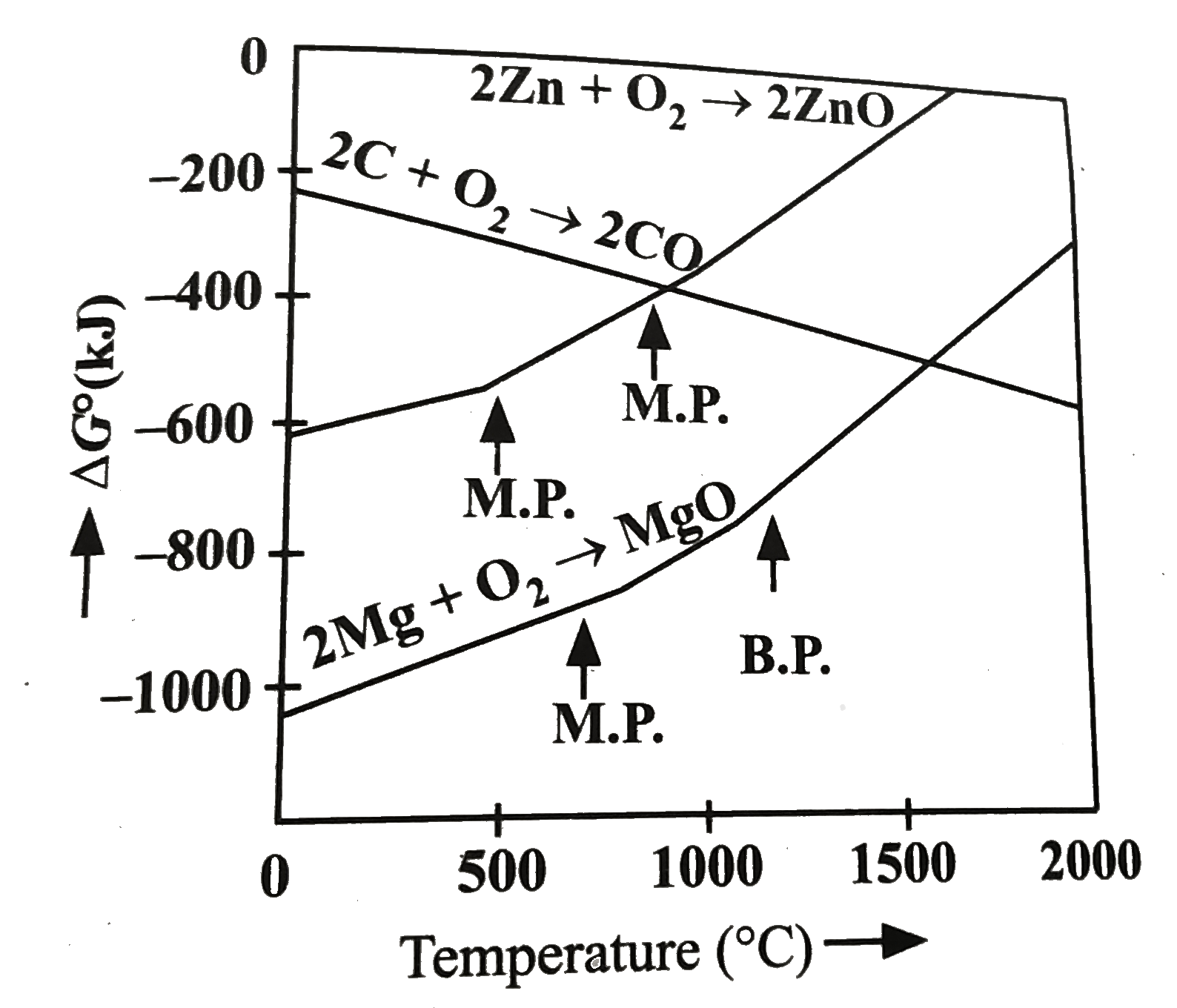In the reaction ZnO+C→Zn+CO 'C' acts as
an acid
a base
an oxidising agent
a reducing agent
To determine the role of 'C' (carbon) in the reaction ZnO+C→Zn+CO, we can analyze the reaction step by step.
Step 1: Identify the Reactants and Products
The reactants in this reaction are zinc oxide (ZnO) and carbon (C). The products are zinc (Zn) and carbon monoxide (CO).
Step 2: Understand the Reaction Type
This reaction involves the conversion of zinc oxide into zinc and carbon monoxide. It is a type of reduction-oxidation (redox) reaction.
Step 3: Determine the Changes in Oxidation States
- In ZnO, zinc (Zn) is in the +2 oxidation state, and oxygen (O) is in the -2 oxidation state.
- In the product Zn, zinc is in the 0 oxidation state (elemental form).
- In CO, carbon (C) is in the +2 oxidation state (since oxygen is -2).
Step 4: Identify Oxidation and Reduction
- The reduction process involves a decrease in oxidation state. Here, Zn is reduced from +2 in ZnO to 0 in Zn.
- The oxidation process involves an increase in oxidation state. Here, carbon is oxidized from 0 in C to +2 in CO.
Step 5: Determine the Role of Carbon
Since carbon is causing the reduction of zinc oxide (by providing electrons to reduce Zn^2+ to Zn) and itself is being oxidized (from C to CO), carbon acts as a reducing agent in this reaction.
Conclusion
In the reaction ZnO+C→Zn+CO, carbon (C) acts as a reducing agent.
---
The reactants in this reaction are zinc oxide (ZnO) and carbon (C). The products are zinc (Zn) and carbon monoxide (CO).
This reaction involves the conversion of zinc oxide into zinc and carbon monoxide. It is a type of reduction-oxidation (redox) reaction.
- In ZnO, zinc (Zn) is in the +2 oxidation state, and oxygen (O) is in the -2 oxidation state.
- In the product Zn, zinc is in the 0 oxidation state (elemental form).
- In CO, carbon (C) is in the +2 oxidation state (since oxygen is -2).
- The reduction process involves a decrease in oxidation state. Here, Zn is reduced from +2 in ZnO to 0 in Zn.
- The oxidation process involves an increase in oxidation state. Here, carbon is oxidized from 0 in C to +2 in CO.
Since carbon is causing the reduction of zinc oxide (by providing electrons to reduce Zn^2+ to Zn) and itself is being oxidized (from C to CO), carbon acts as a reducing agent in this reaction.
In the reaction ZnO+C→Zn+CO, carbon (C) acts as a reducing agent.
Topper's Solved these Questions
Similar Questions
Knowledge Check
In the chemical equation ZnO+C→Zn+CO
'C'acts as a/anAoxidising agentBreducing agentCdehydrating agentDhydrating agentQuestions given below are based on the given diagram for extractive metallurgy.
(ii) At this temperature Delta_(f) G^(Ө) of the reaction is
ZnO+C→Zn+CO.
 .A−veB+veCZeroDNothing can be said
.A−veB+veCZeroDNothing can be saidDuring reduction of ZnO to Zn,C is more efficient than CO.
The standard free energy of formation of CO2 from CO is always higher than that of ZnO.AStatement - 1 is True, Statement - 2 is True, Statement - 2 is correct explanation of Statement -1.BStatement - 1 is True , Statement - 2 is not a correct explanation of Statement - 1.CStatement - 1 is True, Statement - 2 is False.DStatement - 1 is False, Statement - 2 is True.
Consider the following chemical reactions:
ZnCO3→ZnO+CO2
Is this decomposition reaction?
View SolutionStatement - 1 : Durning the reduction of ZnO to Zn, C is more efficient than CO. And
Statement - 2 : The standard free energy of formation of CO2 from CO is always higher than that of ZnO.
View SolutionWhich of the statement about the following reactions is correct ?
ZnO+CO→Zn+CO2
View SolutionRead the given passage and answer the questions.
In the following chemical reaction "zinc oxide reacts with carbon to produce zinc metal and carbon monoxide."
ZnO+C→Zn+CO
The reactions used in black and white photography:
View SolutionIn the reaction C+4HNO3→CO2+2H2O+NO2 , HNO3 acts as
View Solution
